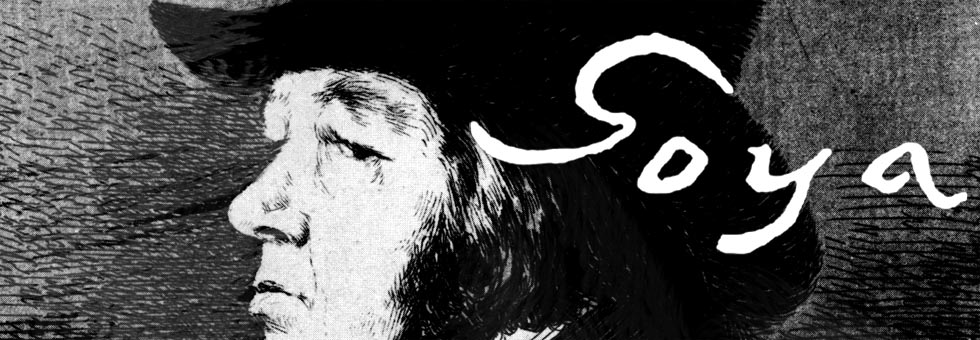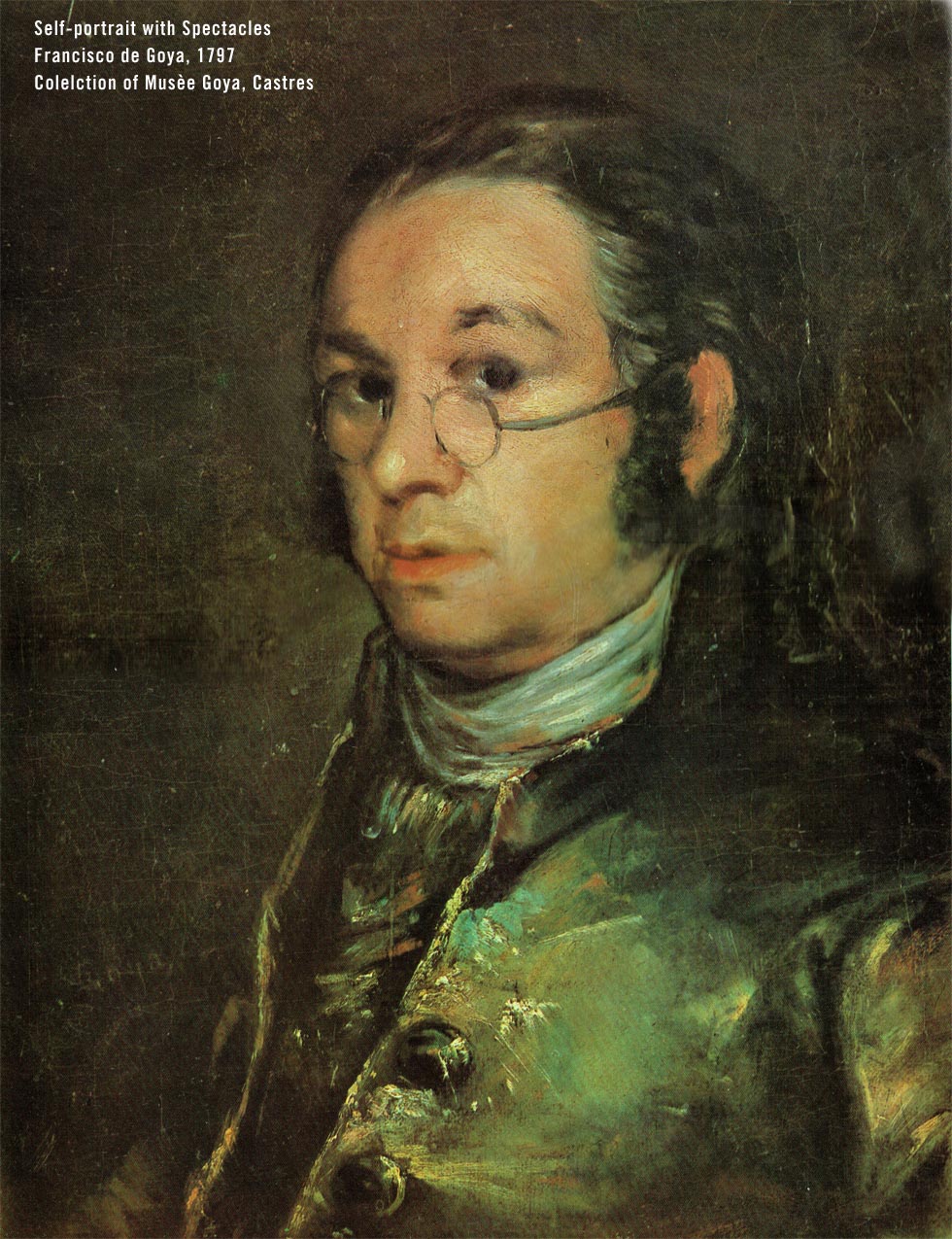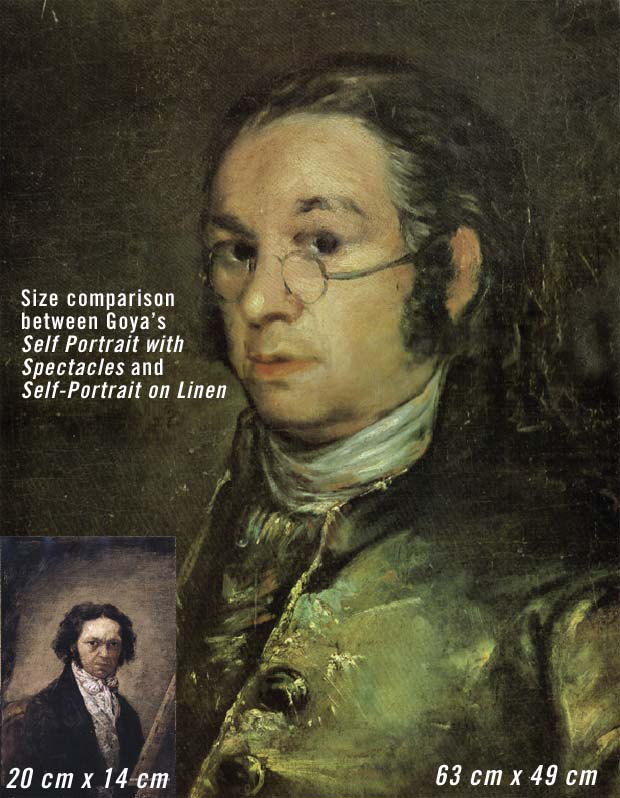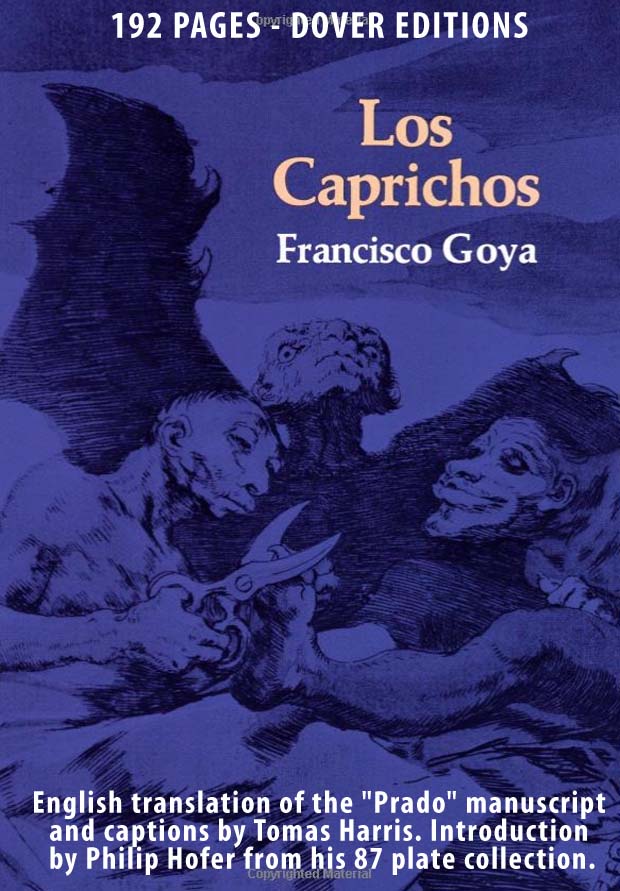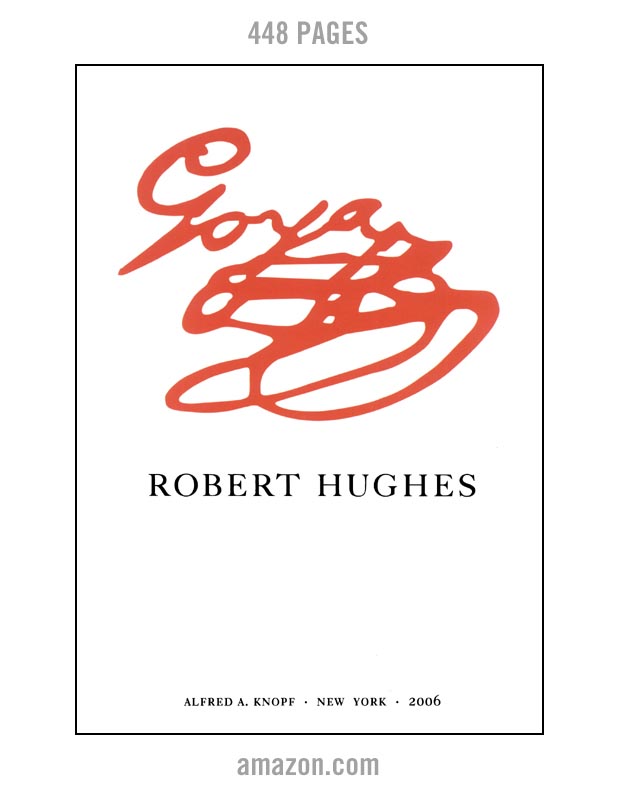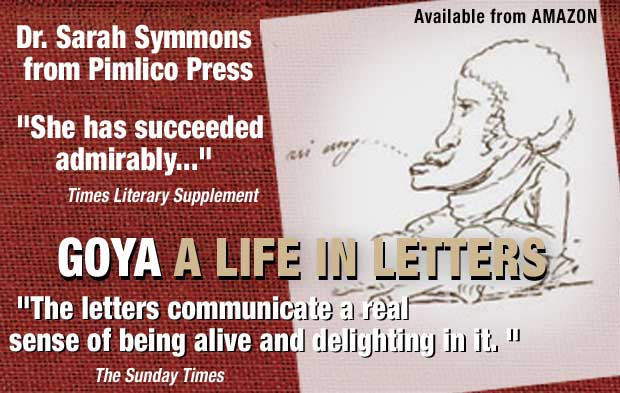Goya | Self-portrait with spectacles
Self-portrait with Spectacles
Autoportrait
"Des autoportraits que l’artiste peignit au cours da sa vie, celui de Castres frappe par sa technique évoluée."
1797-1800 Oil on canvas
(Chefs-D'oevre de l'art, published 1969 by Hachette-Fabbri, dates this painting to 1794)
63 cm x 49 cm
24 7/8 inches by 19 3/8inches
Musèe Goya, Castres
In de Salas book (from Goya, Mayflower 1979, page 76,) he states that this self-portrait painting is dated conclusively at the time Goya was working upon Los Caprichos, and that in this image he is in fact wearing the glasses he used specifically for engraving the Caprichos plates.
"Symbolizing a bookish, intellectual capacity and enlarging the eyes as signifiers of the wearer's powers of perception and reason, the inclusion of spectacles in portraits served to express an activity as intangible as the workings of the mind, and more particularly, the imagination. Goya's Self-Portrait with spectacles makes the sense of the sight into its principal theme."
From Sarah Symmons book Goya, Phaidon Press, 1998, page 133-136
There is a duplicate of this painting listed (in de Salas' book Goya) as at the Musèe Bonnat in Bayonne. This image's size is 54 cm x 39.5 sm. The museum web site is here
See Goya's Self Portrait on Linen
AMAZON
Goya The Terrible Sublime - Graphic Novel - (Spanish Edition) - Amazon
"From this headlong seizure of life we should not expect a calm and refined art, nor a reflective one. Yet Goya was more than a Nietzschean egoist riding roughshod over the world to assert his supermanhood. He was receptive to all shades of feeling, and it was his extreme sensitivity as well as his muscular temerity that actuated his assaults on the outrageous society of Spain." From Thomas Craven's essay on Goya from MEN OF ART (1931).
"...Loneliness has its limits, for Goya was not a prophet but a painter. If he had not been a painter his attitude to life would have found expression only in preaching or suicide." From Andre Malroux's essay in SATURN: AN ESSAY ON GOYA (1957).
"Goya is always a great artist, often a frightening one...light and shade play upon atrocious horrors." From Charles Baudelaire's essay on Goya from CURIOSITES ESTRANGERS (1842).
"[An] extraordinary mingling of hatred and compassion, despair and sardonic humour, realism and fantasy." From the foreword by Aldous Huxley to THE COMPLETE ETCHINGS OF GOYA (1962).
"His analysis in paint, chalk and ink of mass disaster and human frailty pointed to someone obsessed with the chaos of existence..." From the book on Goya by Sarah Symmons (1998).
"I cannot forgive you for admiring Goya...I find nothing in the least pleasing about his paintings or his etchings..." From a letter to (spanish) Duchess Colonna from the French writer Prosper Merimee (1869).
GOYA : Los Caprichos - Dover Edition - Amazon
